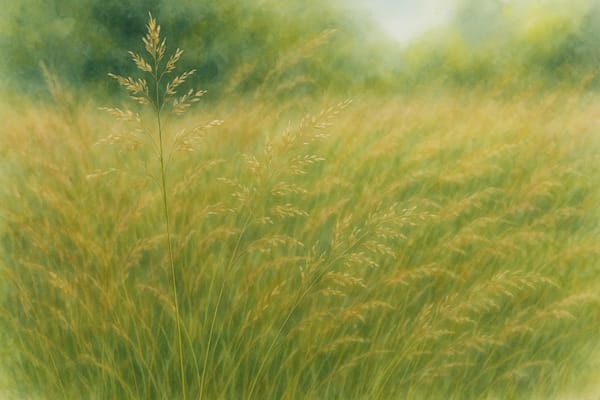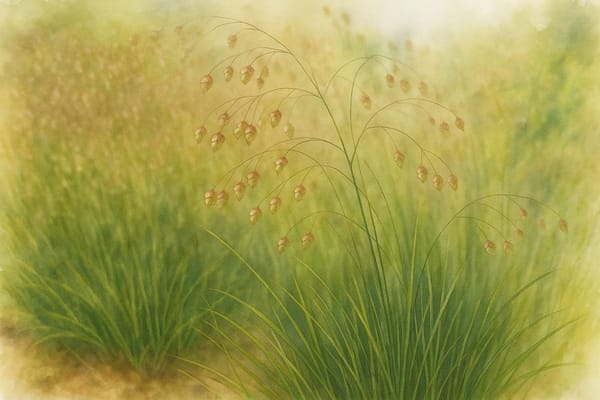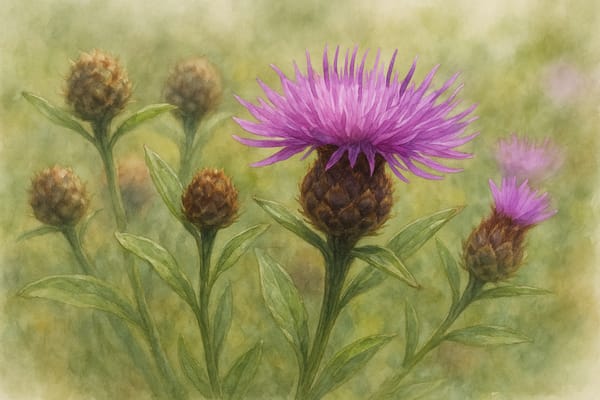Whimsical blue buttons and coastal resilience.
Introduction
With its airy tufts of blue and its love for the wild, wind-swept edges of Britain, Sheep’s Bit Scabious (Jasione montana) is a plant of delicate beauty and enduring grit. Found along Cornwall’s clifftops and in open heathland, this native wildflower carries both cultural resonance and ecological purpose. It is as much a beacon for bees and butterflies as it is a quiet reminder of the folklore and remedies once rooted in the rural rhythms of place.
Cultural and Folklore Significance
Known by many affectionate names—including "blue bonnets" and "blue buttons"—Sheep’s Bit Scabious has earned its place in the seasonal memory of coastal communities. In Cornish and wider UK folklore, the plant was often thought to possess magical powers, used in spells for protection, luck, or to ward off spirits. In contrast, other tales warned that picking the flower could result in warts—a superstition that reflects the long tradition of blending reverence and caution in wild plant lore.
Its use in traditional medicine was modest but meaningful. Infusions were made to ease bronchial and respiratory issues, while its diuretic properties were called upon to relieve fluid retention. In modern studies, extracts have even shown promise in promoting wound healing. Sheep’s Bit was never a mainstream medicinal plant, but it occupied the quiet corner of a coastal healer’s toolkit.
Ecological Importance
From late spring into September, Sheep’s Bit Scabious blooms with unassuming generosity, producing abundant nectar and pollen. Its UV-visible flowers are a magnet for bees, butterflies, and hoverflies. In some areas, it also serves as a larval food plant for moths and butterflies, contributing to fragile food webs.
As a pioneer species, it thrives where others fail—on exposed slopes, sandy banks, and gritty paths. Its roots bind poor soils and protect against erosion. Its presence signals ecological resilience, and its long flowering window provides a vital lifeline to pollinators.
In the Coastal Garden
Hardy and drought-tolerant, Sheep’s Bit is exceptionally well-suited to Cornish gardens that mirror its native terrain.
Ideal Conditions:
- Sunlight: Full sun and open exposure
- Soil: Poor, sandy, rocky, or acidic soils (avoid clay)
- Moisture: Dry to moderately moist; dislikes waterlogging
- Exposure: Salt- and wind-tolerant; thrives on slopes and cliff edges
Care Tips:
- Sowing: Sow in spring or autumn directly onto well-drained soil
- Spacing: Thin or plant 30cm apart
- Watering: Minimal once established
- Pruning: Cut back after flowering unless self-seeding is desired
- Dividing: Rejuvenate clumps in spring
- Companions: Pair with thrift, tormentil, kidney vetch, or toadflax for a soft, wild palette
This is a plant that asks little but offers much—a drifting haze of colour, a hum of life, a touch of enchantment.
Why Grow Sheep’s Bit Scabious?
If you are building a Cornish garden that leans into place, texture, and ecological connection, Sheep’s Bit Scabious belongs in your planting. Whether tucked into a dry stone wall, sprinkled through a gravel path, or left to weave its magic in a dry, sandy corner, it offers resilience with charm.
Let it flower, let it seed, let it speak of wind and blue and memory.
Part of the Plant Profile Series: Native wildflowers that shape the Cornish garden.











